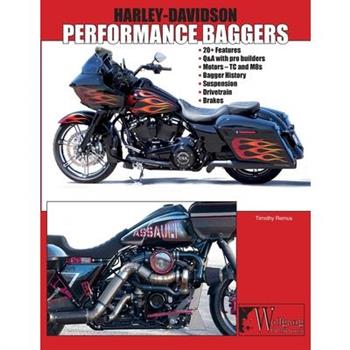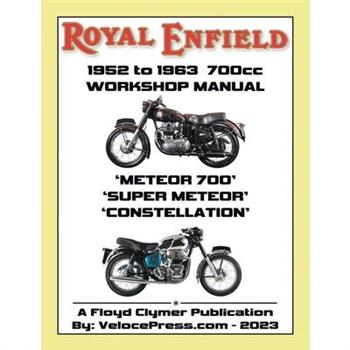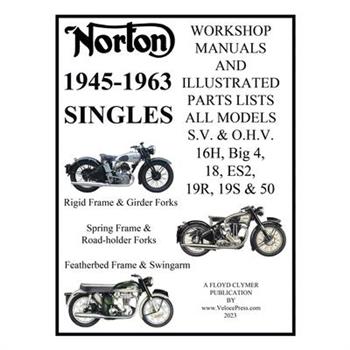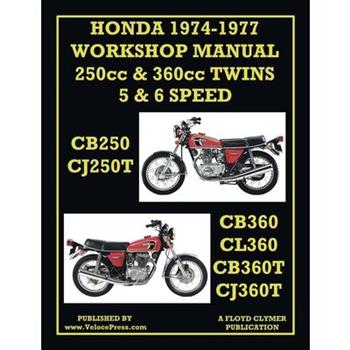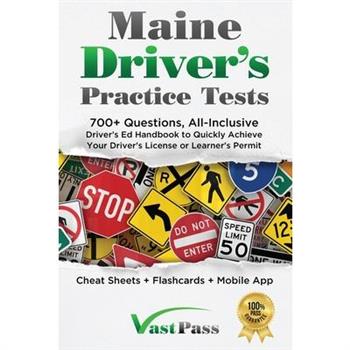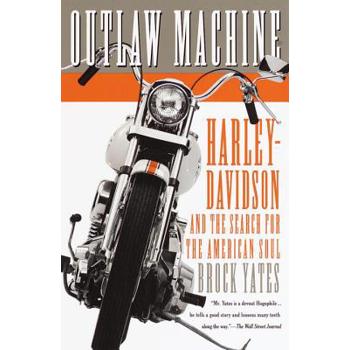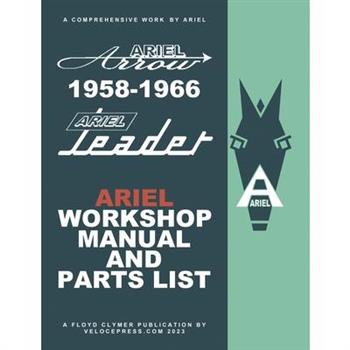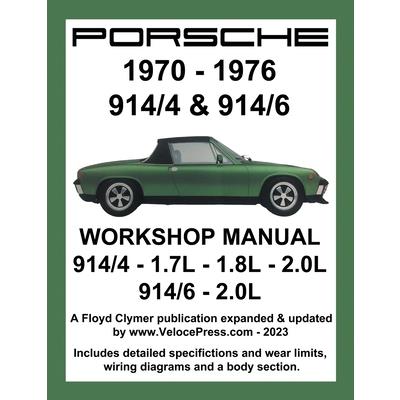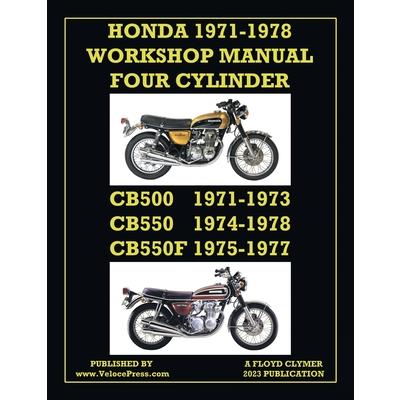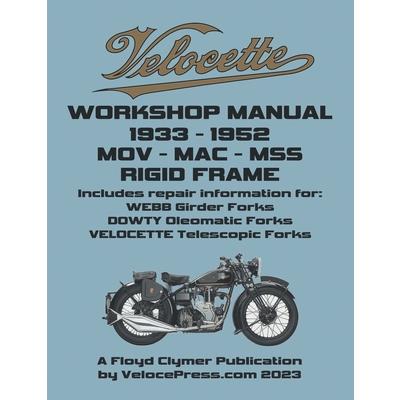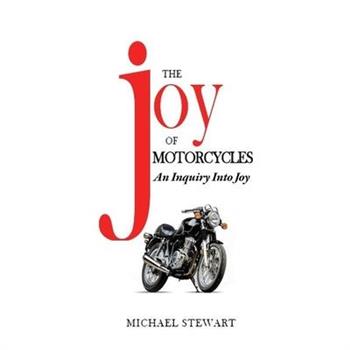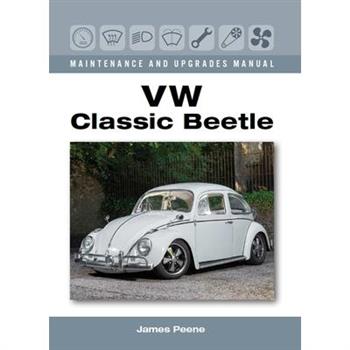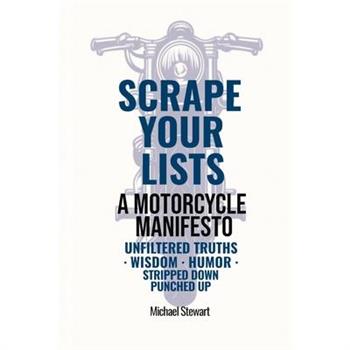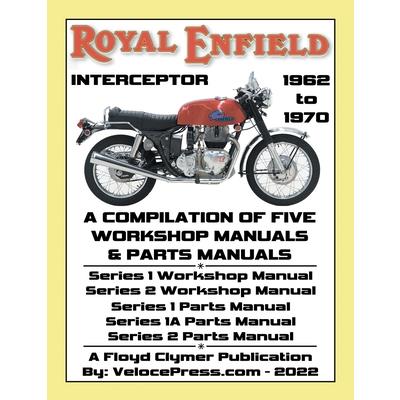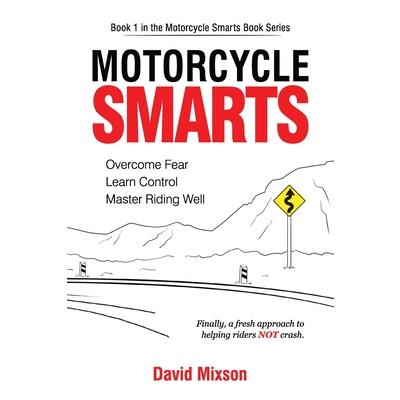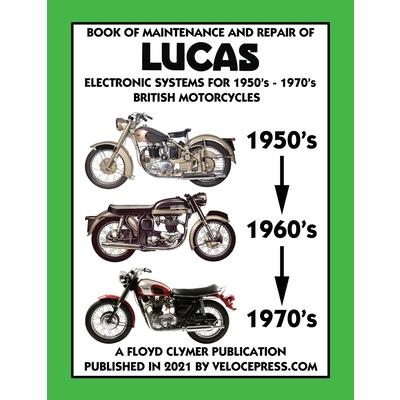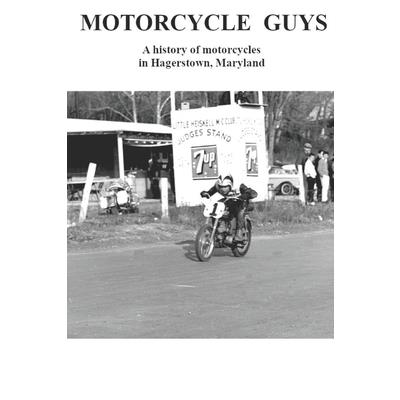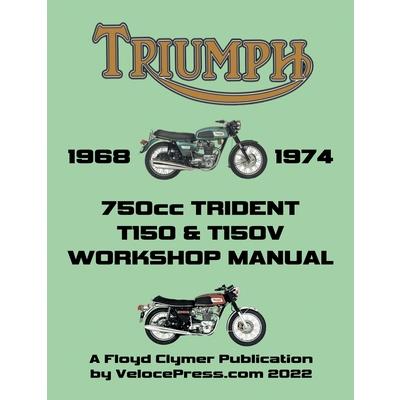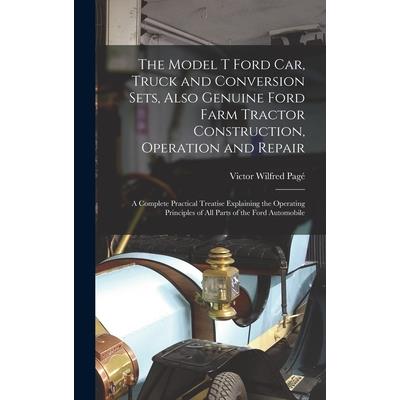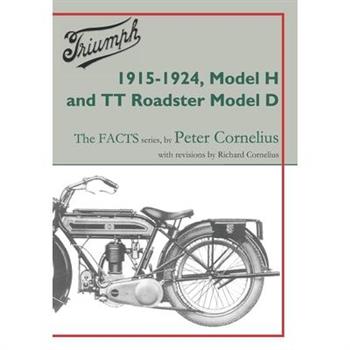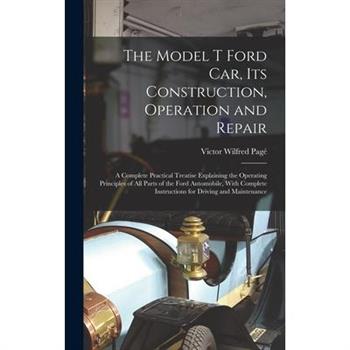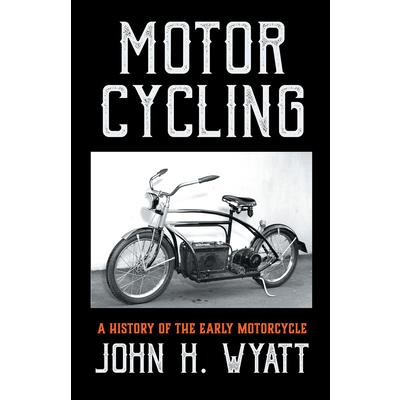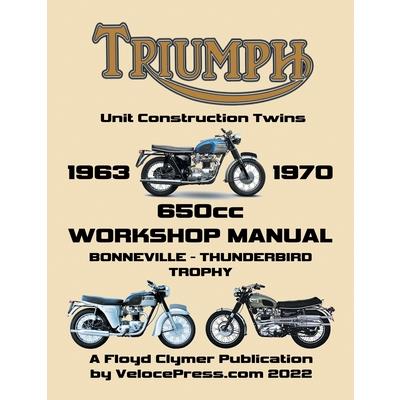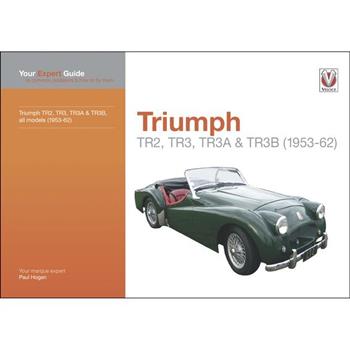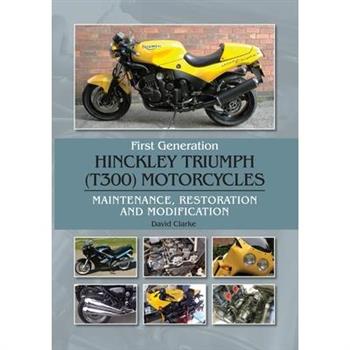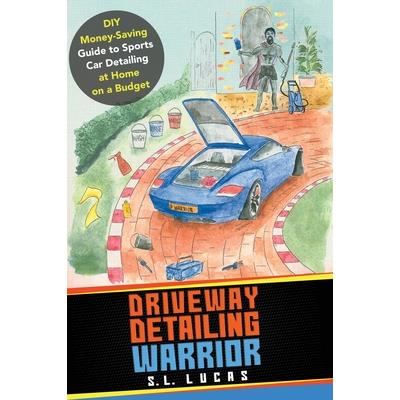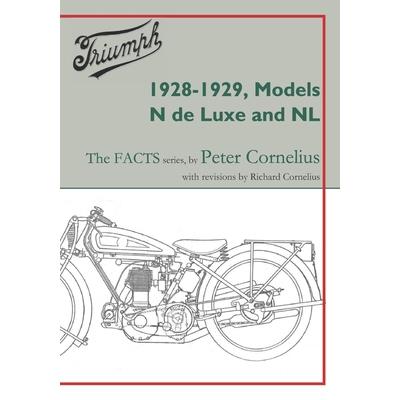The Motor Cycle Handbook, the Construction, Operation, Care and Repair of Modern Types of Motor Cycles, Their Accessories and Equipment
This book is a comprehensive guide to the design, operation, maintenance, and repair of motor cycles, with a focus on modern types and accessories. It covers topics such as engines, transmissions, suspension systems, brakes, electrical systems, and safety features. It also offers practical advice on troubleshooting and repairing common problems.This work has been selected by scholars as being culturally important, and is part of the knowledge base of civilization as we know it.This work is in the "public domain in the United States of America, and possibly other nations. Within the United States, you may freely copy and distribute this work, as no entity (individual or corporate) has a copyright on the body of the work.Scholars believe, and we concur, that this work is important enough to be preserved, reproduced, and made generally available to the public. We appreciate your support of the preservation process, and thank you for being an important part of keeping this knowledge alive and relevant.
Harley-Davidson Performance Bagger
The first motorcycle that you can call a Bagger showed up in the show rooms in 1980.That new frame was longer, and the motor and transmission were mounted on rubber mounts. Those first Baggers came with Shovels, followed by Evos, but no one called those Performance Baggers. The Twin Cam motors came next, and they were definitely faster, but the phrase Performance Bagger still didn't come into use until the M8 came on the scene. This book brings you a detailed look at these new M-8 Baggers, and the Twin Cams that proceeded. The book includes interviews with people like Rick Ward and Bert Baker. Builders who spent a lifetime getting more horsepower and improving the drivetrain. For advice on brakes and suspension, we have information from the staff of Beringer and Ohlins. In addition to the techs and experts, the bulk of the pages are filled with pictures and the story of true Performance Baggers owned by regular riders - on Road Glide and Street Glide. Each of those stories cover the motors, the drivetrain and the chassis. Some went all the way with a 143 cubic inch M-8 with a blower, motors well over 200 horsepower. Other owners simply installed bigger jugs, ported heads, a good dyno run and settled for something like 140 or 150 horses. The same goes with the chassis: new shocks and replaced (or upgraded) fork assemblies. For brakes maybe they install new front rotors and retain the factory calipers or replace all the components. What they did or didn't do is a lesson to readers in all the possible modifications. Written by Timothy Remus with help with experienced builders and experienced owners, H-D Performance Bagger is a high-quality guide for anyone with a late model Bagger or plans to buy that new Bagger.
ROYAL ENFIELD 1952-1963 700cc METEOR700, SUPER METEOR & CONSTELLATION FACTORY WORKSHOP MANUALS
206 pages and more than 180 illustrations and charts, size 8.25 x 10.75 inches. This Workshop Manual is appropriate for the entire line of 1952 through 1963 Royal Enfield 700cc models. It will also be of use to owners of the 700cc USA (only) Interceptor and the Enfield Indian 700cc Apache, Trailblazer and Chief. A compilation of two factory manuals, it includes the original 1955 'Meteor 700' workshop manual for the 1952 to 1955 models and the later workshop manual for the 1955 to 1963 'Super Meteor' and 'Constellation'. PRODUCTION DETAILS: Due to a number of different reasons, there is some confusion surrounding production details, as it is a known fact that the engine and frame numbering procedure did not follow a consistent pattern and, at times, was somewhat random.As the 'Meteor 700' shared many of its mechanical components with the '500 Twin', the earlier manual is appropriate for both of these models. Royal Enfield was very adept at utilizing components across their entire model line and this 'sharing' carried over into their workshop manuals. Consequently, many of the sections and illustrations are identified as being appropriate for various models and not necessarily specific to the particular model referenced in the manual title. The second manual is much more specific to the 'Super Meteor' and 'Constellation' models and the only noticeable 'shared' pages are the carburetter settings table and the lighting, frame and special tools sections. In order to help identify the subtle differences between the various models, the reader is encouraged to review any of the appropriate sections in order to eliminate the possibility of referencing an incorrect 'shared' section.
NORTON 1945-1963 SINGLE CYLINDER S.V. & O.H.V. 16H, Big 4, 18, ES2, 19R, 19S, & 50 WORKSHOP MANUALS & ILLUSTRATED PARTS LISTS
302 pages, and more than 135 illustrations and charts, size 8.25 x 10.75 inches. This manual is a compilation of 7 Norton factory publications specific to the 1945-1963 single-cylinder S.V. and O.H.V. 16H, Big4, 18, ES2, 19R, 19S & 50 models.Workshop Manuals included are: (1) pages extracted from the 16H WD manual dealing with the maintenance and overhaul of girder forks as they are appropriate to the 1945-1946 models (2) a compilation of both the 1947 and 1956 16H, Big 4, 18 and ES2 workshop manuals for the S.V. and O.H.V. 'Road-holder' forks, spring frame (plunger) models (3) a 1956 manual for the O.H.V. swing-arm 19S, ES2 & 50 models and (4) pages extracted from the 1970 manual that are appropriate for the 1958-1963 ES2 & 50.Illustrated Parts Lists included are: (5) a 1948-1949 parts list for the 'Road-holder' forks, spring frame (plunger) 16H, Big4, 18 & ES2 (this parts list also includes the 1946-1949 30, 40, 30M & 40M) (6) a 1956 parts list for the swing-arm ES2, 19S & 50 and the rigid frame 19R and (7) a 1959 parts list for the ES2 &50 (this parts list also includes the 88 & 99 twins).A GUIDE TO THE POSTWAR 1945 THROUGH 1963 NORTON WORKSHOP MANUALS AND PARTS LISTS FOR THE SINGLE CYLINDER 16H, Big 4, 18, 19R, 19S, 50 & ES2.After the war ended in 1945, Norton resumed production of their civilian line of motorcycles and they also began publishing appropriate workshop manuals and parts lists. Unfortunately, there were numerous 'editions' of these publications and, while they identified the models they covered, the workshop manuals rarely identified the years they covered. Ultimately, this can lead to confusion regarding the selection of the appropriate publication for a particular year of Norton motorcycle.WORKSHOP MANUALS: Those published from 1945 up through 1960 were normally exclusive to a specific model. However, beginning in the 1960's, a series of workshop manuals were published that combined the data for both the single and twin cylinder models. Starting with part number P101, followed by P106 and finally P106/P this series of manuals was updated at various times through 1970, however, they continued to include the ES2 and 50 singles. When the 250cc Jubilee twin was introduced in 1958, the earlier 'P' series 'combination' workshop manuals were 'superseded' by the publication of a 1960-1970 factory 'Lightweight & Heavyweight Twins' manual, obviously, the single cylinder machines were no longer included. Owners of the single cylinder models may also find our 'Book of the Norton 1932-1947' (ISBN 9781588501288), 'Book of the Norton 1938-1956' (ISBN 9781588502063) and 'Book of the Norton 1955-1963' (ISBN 9781588501196) to be of interest.IMPORTANT NOTE: Many of the reprints found on internet websites are from 'bedroom sellers' at enticingly low prices by individuals that really have no idea what they are selling. Many are nothing more than poor quality comb bound photocopies that are scanned and published complete with greasy pages and thumbprints and, as such, are deceptively described as 'pre-owned'. In addition, they are often advertised for the incorrect series and/or model years of motorcycles. However, VelocePress.com has been publishing reprints of motorcycle and automobile manuals since 2003 and our publications have earned excellent reviews worldwide so you can be assured you are purchasing a quality product.
Norton 1949-1970 Dominator Workshop Manuals & Illustrated Parts Lists Model 7, 77, 88, 99, 650, Sports Specials, Manxman & Mercury
226 pages, and more than 90 illustrations and charts, size 8.25 x 10.75 inches. This manual is a compilation of 5 factory publications exclusive to the 500, 600 and 650cc Norton Dominator series that began with the introduction of the 500cc Model 7 in 1949 and ended with the 650cc Mercury in 1970.Workshop Manuals included are: (1) a 1949-1955 Model 7 workshop manual that includes the spring frame (plunger) rear suspension models. (2) a 1956-1970 workshop manual compiled from the appropriate pages extracted from the 1970 Norton factory workshop manual, part number P106/P, for the 88, 99, 650 and 'Sports Specials' - it is also appropriate for the 650cc Manxman and Mercury models.Illustrated Parts Lists included are: (3) a 1949-1950 parts list for the model 7 that includes spring frame (plunger) rear suspension. (4) a 1957 parts list for the 77, 88 & 99 and (5) a 1964 parts list for the 88SS, 650SS and the 650/99. However, as the 750cc machines ran concurrently with the final Dominator models, the Atlas and AMC variants are also included in this 1964 parts list.Please Note: The compilation workshop manual is specific to the Dominator series which ended in 1970. It does not include repair data for the 750cc Atlas or the AMC variants (see IMPORTANT NOTE Below). A GUIDE TO THE 1947 THROUGH 1970 NORTON WORKSHOP MANUALS AND PARTS LISTS FOR THE MODEL 7, 77, 88, 99, 650 AND VARIANTSAfter the war ended in 1945, Norton resumed production of their civilian line of motorcycles and they also began publishing appropriate workshop manuals and parts lists. Unfortunately, there were numerous 'editions' of those publications and they rarely stated the years they covered. Ultimately, this can lead to confusion regarding the selection of an appropriate publication for a particular year of Norton motorcycle.
Honda Workshop Manual 1974-1977 Twin Cylinder 5 & 6 Speed Cb250, Cj250t, Cb360, Cl360, Cb360t & Cj360t
170 pages and more than 450 illustrations and charts, size 8.25 x 10.75 inches. This workshop manual is a compilation of 4 original Honda publications. It includes a reproduction of the original 250cc and 360cc twin cylinder 1974 factory workshop manual for both the disc brake and drum brake models, plus 3 factory supplements that cover both the 5 and 6 speed variants, which extends the coverage of the original manual through 1977. The models covered are: CB250, CJ250T, CB360, CL360, CB360T and CJ360T.Many of the earlier Honda motorcycle models were often introduced at different times and in different countries using different model names or designations. For example, the CB 250 was predominantly sold in the European market and not officially available in the USA. However, the 360cc models were available in both Europe and the USA.Unfortunately, this often leads to difficulty in selecting the correct workshop manual and owners of this series of 250cc and 360cc twins are subjected to considerable confusion surrounding the appropriate selection from the multitude of OEM publications that have recently flooded the on-line marketplace. This confusion is compounded by the fact that Honda used both 5 and 6 speed transmissions within the 1974 to 1977 production run of the 250/360 series. Owners of the 1968-1973 twin cylinder 5-speed 250cc and 350cc models are directed to our Honda factory workshop manual, ISBN 9781588502612. Owners of the 1961-1968 twin cylinder 250cc and 305cc C72 & C77 series will require our Honda factory workshop manual, ISBN 9781588500731.Finally, please note that the text in the original Honda Factory Workshop Manual was translated from Japanese into English. Consequently, some of the phrasing, grammar, punctuation and word usage may be subtly different from that commonly used in the English language. However the information, as presented, is readily understandable. In addition, while we have done our best to identify any anomalies, errors and incorrect spelling that may have occurred during the original translation process, we are certain that we will have missed one or two and we request your indulgence in ignoring them.
Iron Horse Cowgirls
Before Louise Scherbyn founded the Women's International Motorcycle Association, she was simply a working girl who loved motorcycling--at a time when women weren't allowed to wear pants, roads weren't hard-topped, and handlebars could come apart while riding. The hardest part? Auxiliaries she looked to for support each proved to be the wrong fit--some uncomfortably, disastrously so. All Louise wanted was for women riders to have a proper space of their own. For that she would ultimately have to forge a new path. This book tells the fascinating story of Scherbyn's journey in forming the first stand-alone women-only motorcycle association. Chapters cover 225,000 miles and two decades' worth of community-building, hostilities, physical and professional attacks, recovery, sisterhood and more. Scherbyn paved the way for women motorcyclists across the world while facing a storm of threats and uncertainties, driving ahead with newfound friends and her singular, unifying vision for women who ride.
Maine Driver’s Practice Tests
Want to Ace your Maine BMV Driver's License Exam, even if you've never Driven before? Are you afraid of failing your driver's license test? Or have you failed the test before and still aren't sure what the right answers are? Do you want to pass your BMV written exam without getting stumped on tricky questions? You might've heard that the driver's license test in Maine is immensely difficult, regardless of your driving experience. Plenty of out-of-staters will tell you horror stories of how they failed terribly on the written exam... despite years of driving under their belts. And it's even scarier if you've never been behind the wheel. Because as excited as you may be to start driving on your own... you only get a few tries to pass the written test... before you're forced to begin the whole application process all over again. Even if you've read through the BMV handbook over and over, you might miss a "redundant" question where all of the answers look like they could be correct. And missing just one question is enough to invalidate your entire driver's license application. But there's a simple and easy way to save yourself the embarrassment of failing your driver's license test. With the right study guide, you'll be prepared for every question you come across on the test so you can pass with flying colors. In this Maine Driver's Practice Tests Course, you will discover: A comprehensive guide to applying for, taking, and passing the Maine BMV written exam Over 700 questions and answers to prepare you for the most recent version of the written test Detailed explanations of each answer to help you get a perfect score Over 9 different chapters that lay out the basics of each section on the exam - plus 2 BONUS cheat sheets The biggest mistake most people make when prepping for their tests, and how you can avoid the same fate 56 tips and tricks to get you ready for both the written exam and the road test Studying hacks to make sure you ace every question on the test, even if you don't have enough time to practice The 12 questions most test takers get wrong - answer these the right way if you don't want to fail And much more! Don't waste hundreds or even thousands of dollars on driver's ed courses that barely even help you with the written portion of your driver's license test. This Maine Driver's Practice Tests Course shows you everything you need to know to pass your exam on the first attempt... and for only a small fraction of what it costs to hire an instructor. Regardless of your driving experience, this all-in-one guide will boost your test-taking confidence and have you cruising around Maine in no time. You could keep sitting at home worrying about whether or not you're going to have to retake the test... or you can master all the essential road rules, skills, and practices and get one step closer to obtaining your driver's license. If you want to Pass your BMV written exam once and for all, then scroll up and click the "Add to Cart" button right now.
Outlaw Machine
The legendary story of Harley-Davidson's rise to power--not only as an international industry leader but as an American cultural icon. How did the Harley-Davidson motorcycle, originally a machine for casual riders, evolve into a symbol of defiance and liberation? An embellished 1947 Life magazine article about a California town terrorized by gangs of motorcycle punks changed the world's perception of motorcycles from sporty machines to menaces-to-society, and as the loudest and heaviest bikes on the market, Harley-Davidsons were considered the baddest of them all. Outlaw Machine chronicles the fascinating social history that built Harley-Davidson's reputation--including the rise of Hell's Angels and the counterculture classic Easy Rider--and, more entrancing still, the bike's and its company's storybook rise to international fame and popularity. Written by renowned automotive journalist Brock Yates, Outlaw Machine is the definitive book on the Harley-Davidson and its place in American culture.
Economic Growth
This book is a comprehensive guide to the design, operation, maintenance, and repair of motor cycles, with a focus on modern types and accessories. It covers topics such as engines, transmissions, suspension systems, brakes, electrical systems, and safety features. It also offers practical advice on troubleshooting and repairing common problems.This work has been selected by scholars as being culturally important, and is part of the knowledge base of civilization as we know it.This work is in the "public domain in the United States of America, and possibly other nations. Within the United States, you may freely copy and distribute this work, as no entity (individual or corporate) has a copyright on the body of the work.Scholars believe, and we concur, that this work is important enough to be preserved, reproduced, and made generally available to the public. We appreciate your support of the preservation process, and thank you for being an important part of keeping this knowledge alive and relevant.
Porsche 914/4 & 914/6 1970-1976 Workshop Manual
312 pages and more than 600 illustrations and charts, size 8.25 x 10.75 inches. When the new Porsche 914 was announced in 1969 (as a 1970 Model), Floyd Clymer had already published a number of Porsche and VW manuals. Those publications included manuals for the Porsche 356 and 912, the VW Beetle, the 1500cc/1600cc Square-back/Hatch-back and the Transporter/Bus. Consequently, it was no surprise that Floyd would begin preparation of a 914 shop manual. Floyd was able to complete the Porsche 914 manual in record time, mainly because he was able to re-use most all of the 'mechanical' pages from his previously published Porsche and VW manuals. The only entirely 'new' section that he had to prepare was a chapter for the body components as they were uniquely different from any previous Porsche or VW model. Unfortunately, due to his untimely passing in early 1970 the 914 manual, although complete, remained unpublished and obviously, it only covered the early 914/4 1.7 liter and the 914/6 2.0 liter engines. We have taken that original manual and updated the information to cover the later 4 cylinder 1.8 liter and 2.0 liter models through 1976. While much of the general data is shared between both the 4 and 6 cylinder 914 variants, owners of the 6-cylinder 914 model are encouraged to read any individual chapter in its entirety, as it may include information that is specific to the 6-cylinder version.
Honda 1971-1978 Workshop Manual 4-Cylinder Cb500, Cb550 & Cb550f Super Sport
194 pages, and more than 500 illustrations and charts, size 8.25 x 10.75 inches. This Workshop Manual is a compilation of various Honda Factory Manuals for the three variants of the 500cc and 550cc four-cylinder models manufactured from 1971 through 1978. The original CB500 released in 1971 ultimately morphed into the 1974 CB550 and the 1975 CB550F 'Super Sport'. The original 'base' 500cc manual was expanded, by the factory, to include the CB550 and subsequently updated with supplements for the later models. It covers the 1971-1973 K0, K1 & K2 CB500 the 1974-1978 CB550 K0, K1, K2 ('76), K3 ('77) & K4 ('78) and the 1975-1977 CB550F F0, F1 ('76) & F2 ('77). Beginning in 1968 and extending through the 1975 model year, the 'K' suffix often, but not always, changed on an annual basis. 'K0' was normally used to indicate the first model in the series with updated versions identified as K1, K2, K3 etc. While the 'K' number designations continued in use outside the USA through 1978, in September 1973, American Honda adopted a year identifier within the model number - for example; a CB550'76 would be a 1976 USA model but in most other countries, that same model would be identified as a CB550K2. Setting this potential for confusion aside, we can state that this manual covers the entire 1971 through 1978 range of 500cc and 550 cc four-cylinder models. After his visit to Japan in 1961, Floyd Clymer published 'The Complete Catalog of Japanese Motor Vehicles' (ISBN 9781588502209). Based on his experiences during that visit, Floyd also anticipated the need for repair manuals for those Japanese motorcycles that were just starting to be imported into the USA [Yamaha (1958), Honda (1959), Suzuki (1963)]. The predominance of the Floyd Clymer Japanese motorcycle manuals were either reprints or compilations of the factory publications which today makes them more desirable than the current aftermarket manuals.
Velocette - Mov - Mac - Mss 1933-1952 Rigid Frame Workshop Manual & Illustrated Parts Manual
196 pages and more than 83 illustrations and charts, size 8.25 x 10.75 inches. This publication is a reproduction of two original Velocette Factory Manuals, the October 1955 service manual, part number F50/7R and the March 1958 illustrated parts manual, part number F132/11R. The parts manual is invaluable as it details changes in construction by engine number and/or model year. The original 118-page factory service manual covers the 1933-1952 range of 250cc, 350cc and 500cc rigid frame models and both the 'Iron' Cylinder Head and 'Aluminum' Head machines. It includes the 1933-1948 MOV and the 1935-1948 MSS with Webb Girder Forks and the 1934-1952 MAC. The MAC models covered are the 1934-1948 with Webb Girder Forks, the 1948-1950 with 'Dowty' Oleomatic Forks and the 1951-1952 models with 'Veloce' Telescopic Forks. In addition, a reproduction of the factory 'Service and Maintenance' manual for Dowty forks is included. The original 68 page illustrated parts manual covers both the MOV and MAC models listed above. It also includes diagrams and parts listings for the Webb, Dowty and Velocette forks. The 350cc MAC is possibly the most popular Velocette model ever built. It evolved from the 250cc MOV by lengthening the stroke of the MOV crankshaft from 68.25 to 96 mm. From 1933-1939 the MAC was constructed with a rigid frame fitted with Webb girder forks. From 1940-1941 a version of the MAC was the basis for the company's World War II military motorcycles. The Military models were MDD and MAF (Factory Dispatch Records state 1320 were produced). In 1946, after the war, MAC civilian production restarted, and in 1948 the MAC's Webb girder forks were replaced with innovative air-sprung oil dampened 'Dowty Oleomatic' forks. In 1951, the Dowty forks were replaced by Veloce 'telescopic forks', with coil springs and oil damping. In June of that same year the engine was upgraded to an aluminum barrel and head with wider fins to improve cooling. For 1953, the MAC was updated with fully adjustable rear swinging arm suspension and a tube frame. Production of the rigid frame MAC ended in 1952 swing arm production ended in 1960. Based on the factory part numbers there were approximately 20 service and parts manuals published during the 20-year production run of the rigid frame machines. However, the print quality of the later factory manuals was not the best, as the same pages or sections from earlier publications were re-printed multiple times as the newer manuals were published. Unfortunately, this created problems in print quality and print density in those later manuals resulting in both light and heavy print on the same page. While we have done our best to correct as many of those imperfections as possible there are some occurrences that just could not be corrected. Therefore, we request your indulgence in tolerating any variations that still exist and accept that the intention in reproducing these manuals was to provide the reader with information that would assist in the renovation and maintenance of these classic Velocette motorcycles.
The Joy of Motorcycles
Born of engineers and technicians, motorcycles exist in a state of mechanical bliss, forever coaxing, you know you want to ride me, unleash my MAGIC. Set my GPS for a distant land or explore a local trail. Give society's laws and norms the outlaw finger as we go. If you want me, I'll be here.From the author of Scraping Pegs, The Truth About Motorcycles comes the rest of the story. Is it possible to overcome the trauma of a stag bent on destruction to rediscover the wonders of riding?The Joy of Motorcycles is about what happens and what is heard when one lives with bikes. A romping account of the dilemmas, triumphs, realities, and traditions of motorcycling. An Inquiry into Joy.Hop on. With an off-beat sensibility, the trip may get bumpy, so hold on tight. Scrape your pegs on the Road to Joy.
Car Repair
This book is intended to provide and comprehensive guide to basic automotive maintenance and repair. This book is for the person who may, or may not, have knowledge in the field of automotive repair. We want to provide the reader with basic knowledge on car repair and general maintenance procedures in order to maintain their own vehicle or pursue a career in automotive repair. We dedicated one section in the book with detailed instructions on routine maintenance tasks that occur in most all vehicles on the road today. Here is a preview of what you'll learn...Different types of carsMaintaining each car properlySimple maintenance checksCost saving strategiesAdvice from the expertsWhat you can do today to help your vehicleMuch, much more!In this book, i will lay out my proven 11-step-formula for giving your car that showroom shine at home.Imagine the joy of taking care of your own car and giving it that thorough, professional clean. Imagine the reactions of your friends when you show up in your car that looks stunning.
Motorcycle State of Mind
Every lean is a choice.Motorcycle State of Mind is about the moments that shift your perspective. Even on familiar roads, riding can be a quest-life condensed in time. More than asphalt, scenery, or adrenaline.Motorcycle State of Mind is a satirical, throttle-twisting road trip packed with two-wheel wisdom, rest-stop characters, and grace. Therapy without words and incense. Not every ride is smooth, but every mile matters.Scrape your therapy. Let the road do the talking.Tune your Motorcycle State of Mind.
High-Performance Cams & Valvetrains
Understand the "magic" of how optimized camshafts extract the most performance from every engine component, eliminating valvetrain guesswork.Camshafts are the coach and conductor of any four-stroke engine from early flatheads to modern Formula 1. Performance engines are amazingly sensitive to how and when the valves to the combustion chamber open and close. The valvetrain configuration and flow characteristics may change significantly between applications, but the fundamental principles are universal. This allows the language, setup, dynamics, energy, and pressure aspects of a valvetrain to be covered in a way that is just as useful for optimizing a sub-15-hp go-kart engine as it is on a 500-plus-hp street engine or a modern 1,500-plus-hp NHRA Pro Stock engine. In High-Performance Cams and Valvetrains: Theory, Technology, and Selection, farm-kid-turned-physicist Billy Godbold combines his quarter-century of experience with valvetrains at Comp Cams, Lunati, Crane Cams, and Edelbrock with the techniques he uses with professional teams in NASCAR, the NHRA, road racing, dirt-track racing, offshore racing, and land speed racing. He guides you to think about any valvetrain system with his perspective. Often lighthearted and filled with analogies, this book endeavors to make complex concepts easy to understand without watering down important details.Specific configurations and applications are covered, providing techniques and examples for optimizing camshafts and the valvetrain around intakes, headers, superchargers, turbochargers, fuels, carburetors, and modern EFI applications. If you are planning or building a performance engine, or if you just want to know the science behind how cams and valvetrains work, this book is an indispensable resource.
Mini Honda
Inexpensive, stylish, and highly customizable, these tiny machines muscled their way into the world's consciousness. Honda's original model, the C 100 Super Cub, became a global smash hit. Since its release in 1958, more than 100 million Honda Super Cub mini motorcycles have been produced, and it has become the bestselling motorized vehicle in history. Over the years, Honda continued to refine and develop its winning formula, following up with additional models, including the Monkey and the Dax. Mini Honda features 250+ archival and new photos, detailed technical data, and first-person stories from passionate Honda mini-motorcycle devotees. This nostalgic and fun compendium presents the complete model history of Honda's legendary little motorbikes and discusses the unique culture surrounding them. So, hop on and enjoy a ride into the world of Honda's iconic mini motorcycles!
38
Imagine believing from a young age that you would die at thirty-eight. How would you live your life differently?This belief drove Michele Smith to live her life in fast-forward. In her memoir, 38, the former model, actress, and host of American Thunder shares the adventures that arose from her certainty that her time on this earth was short. Follow her from her small hometown in Pennsylvania across countries, cultures, and careers as she uses candor and humor to discuss her true love in life: travel.Michele never bothered to write a bucket list-she lived it instead. Now she's recording those memories and inviting you to live your bucket list too. After all, life is meant to be lived.
VW Classic Beetle - Maintenance and Upgrades Manual
VW Classic Beetle is the latest in the Maintenance and Upgrades Manual series, which are based on real-life experience and written by expert authors. The original air-cooled VW Beetle is a hugely distinctive and popular classic car with over 21 million produced over a 65-year period. It is also an ideal starter classic for anyone looking to get their hands dirty. This new book includes an illustrated timeline to the various models produced and a useful buyers' guide with a systematic approach. There is information on workshop tools and equipment and a service and maintenance schedule. How to maintain all aspects of the engine, transmission, brakes and bearings, suspension and electrics are covered. Information on modifications and upgrades for the engine, brakes and suspension including front beam, dropped spindles, spring plates, air ride, and wheels and tyres is included. Troubleshooting tips for when your car won't start or won't go into gear are given and, finally, tips on restoration of the paint and bodywork, or respray. There are useful chapters on fitting an ISOFIX base for a child safety seat, as well as fire suppression.
Roads Yet Ridden-Your Maintenance and Travel Journal
Helpful, easy to use motorcycle maintenance log and travel journal for your BMW motorcycle. Keep track of your daily motorcycle adventures with plenty of room to write. Featuring- -Lined Pages -Dates -Routes -Notes -Sketch Area A huge section for regular maintenance notes and performance upgrades allows you to document what you've done, the results, and even an area to record sketches and pics. Small 6X9 format allows this journal to be stored out of the way on your bike but still gives you the opportunity to quickly pull out and "journal" whatever you want to record. High quality product produced by bikers for bikers.
Scrape Your Lists
Why ride the clutch through rambling descriptions, dissertations, backstory, travelogs, trip reports, and musings? Lean hard, twist the throttle, and get to the point! Scrape Your Lists: the motorcycleriding experienceexpressed in point form.Why is motorcycle riding not on top ten adventure lists?Move over skydiving, swimming with sharks, big game hunting, climbing to Machu Picchu, and other lesser activities. A group of friends roll out twenty-two lists to right a wrong. No products. No marketing. Just very important points stamped with two-wheel (and three) integrity.Fuel up. Rev your engines. Straddle the magic and feel the power of lists between your legs.
ROYAL ENFIELD 750cc INTERCEPTOR 1962 to 1970 WORKSHOP MANUALS & PARTS MANUALS COMPILATION - ALL MODELS
296 pages and more than 200 illustrations and charts, size 8.25 x 10.75 inches. This Workshop Manual is possibly the most comprehensive publication ever produced for the 1962 through 1970 Royal Enfield 750cc Interceptor.A compilation of five factory publications, it includes the original MK1 or Series I workshop manual for the 1962 to 1966 models and the later workshop manual for the 1968 to 1970 MK2 or Series II. In addition, it also includes the three illustrated factory 'Spare & Replacement Parts' manuals: The difficult to find 1962-66 MK1, the 1967-68 MK1A and the 1969-70 MK2 models which also includes the often missing 1970 Supplement. While Royal Enfield never issued a workshop manual that was specific to the MK1A model, the later MK2 manual, when used in conjunction with the MK1A parts manual, it will provide adequate maintenance and repair information. This manual covers the following models: 750cc Royal Enfield Interceptor MK1 (Workshop & Parts Manuals), the Workshop Manual covers both the early and late MK1 models and both the UK and the USA variants.750cc Royal Enfield Interceptor MK1A (Parts Manual)750cc Royal Enfield Interceptor MK2 (Workshop & Parts Manuals), the Workshop Manual also includes data that is specific to the 1962 to 1968 models.PRODUCTION DETAILS: The 750cc UK Interceptor MK1 (or Series I) model was produced from September 1962 through December 1965. The 1964 line-up was expanded to include a 'Standard' 6 volt model (September '63 to August '64) plus a 'De-Luxe' model with 12 volt electrics. Then in January 1966, Interceptor production was temporarily suspended for the UK market until September 1967. However, when UK production resumed, the 750cc Interceptor MK1A (now fitted with coil ignition and Amal Concentric carburetors) was released (October '67 to September '68). The final variant, the MK2 (or Series II) was produced from October 1968 to July 1970. However, as both the 1969-70 'Clymer Indian' Enfield and the 1970-72 'Rickman Enfield' utilized the MK2 engine, this manual will also be of use to owners of those rare models. Due to a number of different reasons, there is a great deal of confusion surrounding production details and the various differences between the UK and USA Interceptor models. Firstly, it is a known fact that the engine and frame numbering procedure did not follow a pattern and, at times, was somewhat random. Adding to this confusion is that during the 1966-1967 factory shut-down of UK Interceptor production, various models were still being built for export to the USA. Then, beginning in March 1967, the company went through a number of significant changes in manufacturing location, management, ownership rights and mergers. However, it is known that in 1964, the USA Interceptor became the TT model. The 'Custom' model was added in 1965 and the GT in 1966. Consequently, it is very likely that the Interceptor models produced for the USA during the 1966-1967 UK market shut-down included the 'Custom' and the TT and GT variants. There were two MK1A models produced for the USA market, the TT7 (Scrambler) and the GP7 (Road Racer). The final UK/USA model, the MK2, was introduced for 1968 and remained in production through mid-1970. The cover image is a 1970 MK2 and the previous optional air cleaner, oil cooler, skid plate and seat rail were all fitted as standard equipment, however, the larger fuel tank was still an option. In order to help identify the subtle differences between the UK and the USA models, the reader is encouraged to review all three parts manuals and both workshop manuals prior to performing any adjustments or repairs. It should be noted that the MK2 workshop manual contains information that is also specific to the earlier models, including the MK1.
Motorcycle Smarts
"If I didn't think I could measurably reduce my chances of crashing, I wouldn't ride."- David Mixson Do you feel guilty for wanting to ride a motorcycle? Do you have a fear that overcomes you when you ride? Do you want to enjoy the peace of mind knowing that you're doing everything possible NOT to leave your family alone? David Mixson, author of the Motorcycle Smarts book series (and NASA engineer), debunks the myth that crashing is a matter of fate by explaining the most important topics that other motorcycle mega books gloss over. You won't find page-filling discussions about how to get the most out of your first Sturgis Rally or how to select riding gear. Instead, you'll find one of the most in-depth, simple to understand explanations of lowside and highside crashes that exists-anywhere. Riders die every day in these rider-induced crashes-and it doesn't have to be this way. Mastering the art of riding a motorcycle well is about understanding and overcoming rider fear. It's about having the head knowledge of how your motorcycle works so you can make it go where you want it to go. It's about understanding why riders crash so you can avoid making the same mistakes. It's about taking ownership of your riding safety. In addition to in-depth discussions about rider fear and (lowside and highside crashes), Motorcycle Smarts covers topics like countersteering, muscle memory, and braking. It also addresses some of the most important lessons from the Hurt Report and makes a case for only riding motorcycles equipped with ABS-that has nothing to do with stopping distances. Here's what one reader said: "I've read Total Control, Proficient Motorcycling, and Stayin Safe, but the section in Motorcycle Smarts on lowside and highside crashes is all the difference. David is great at simplifying difficult concepts. I'm definitely passing along this book to my riding friends."- Dano in San Diego, California NHTSA studies show that nearly half of all motorcycle fatalities are caused by rider error-and the numbers aren't getting any better. The training isn't working. The current motorcycle skills books aren't working. We need a fresh approach to helping riders NOT crash. This book is that. "This is the book I would hand to someone who's been riding for decades and wants to reduce their risk of crashing. This is the book I would give my son or daughter if they told me they wanted to learn how to ride a motorcycle. This is the book I couldn't find when I first started riding at forty."- David Mixson
Motorcycle Dream Ride
"When Mike mentioned the idea of riding our motorcycles from Alabama to Alaska, I laughed. Three days later, I told him that I thought we should do it."- David Mixson Why is it that we make lame excuses of why we can't live our BIG DREAMS? Our journey from Alabama to Alaska was less about making it there-and more about discovering things about ourselves we didn't know. It was about uncovering goodness that often goes unnoticed. It was about doing what we weren't sure was possible. It was about overcoming FEAR. Here's what one reader said: "Wow! You were in Hyder, Alaska before I put the book down the first time! Your narrative made me feel like I was almost there with you. I really appreciate the insights during the prep, the ride, and in hindsight. The best part is that you've made me excited about pursuing my own BIG DREAM. I would definitely recommend this book to anyone that has a dream or who enjoys riding. Thank you for sharing your adventure!"- Lisa (a reader in Birmingham) I wrote ride reports at the end of each day and posted them online for friends and family to read. But I only told part of the story. This book peels back the layers and describes what was really going through my head before, during, and after our ride. This book took me over five years to finish. In many ways, that's a blessing because it allowed me to remember the adventure at a pace I could appreciate and honor.- David Mixson Motorcycle Dream Ride is the second book in the "Motorcycle Smarts" book series.
BOOK OF MAINTENANCE AND REPAIR OF LUCAS ELECTRONIC SYSTEMS FOR 1950’s-1970’s BRITISH MOTORCYCLES (Includes 1960-1977 Parts Catalogs)
Please note that many of the reprints found on internet websites are from 'bedroom sellers' at enticingly low prices by individuals that really have no idea what they are selling. Many are nothing more than poor quality, comb-bound photocopies that are scanned and published complete with greasy pages and thumbprints included. In addition, they are often advertised for the incorrect series and/or model years of motorcycles. Conversely, VelocePress.com has been publishing reprints of motorcycle and automobile manuals since 2003 and our publications have earned excellent reviews worldwide so you can be assured you are purchasing a quality product.198 pages with more than 150 illustrations charts and diagrams, size 8.25 x 10.75 inches. A previously unpublished manual from the Floyd Clymer archives. This manual is a compilation of original factory publications that include the working principals, maintenance, repair, trouble-shooting and testing of Lucas electronic equipment as utilized by the major British motorcycle manufacturers including: A.J.S., B.S.A., Matchless, Norton, Royal Enfield and Triumph. The factory 'repair and service' publications included are as follows: Maintenance instructions for "Electric Lighting and Ignition equipment" and "Alternating Current Equipment" both of which are applicable to the 1950's (and earlier *) through 1960's machines, plus the "Motor Cycle Service Manual" for the 1970's and later models. The compilation of these three publications basically covers machines constructed from the early 50's up to the unfortunate demise of the British motorcycle industry in the late 70's. Component maintenance, repair and test data for both 6 volt, and 12 volt, singles, twins and triple cylinder machines are covered and include: Dynamo, Magneto (both face cam and ring cam) Distributor, Coil, Contact Breaker, Battery, Head Lamp, Tail Lamp, Horn, Alternator, Rectifier, Starter Motor, etc. There are also 10 pages of typical wiring diagrams. In addition, there are two motorcycle "Electric and Suspension Parts" catalogs included that cover 1960 through 1977 Lucas equipped motorcycles. While their primary intention was to provide appropriate Lucas part numbers by motorcycle manufacturer and model, they are of considerable importance during any restoration project, as they serve as a comprehensive parts interchange reference by comparing component part numbers utilized by the various motorcycle manufacturers. As can be expected from any factory publication, there is adequate detailed text and diagrams making this compilation an invaluable resource for owners and restorers of Lucas equipped motorcycles and we are pleased to be able to offer this reprint as a service to all Lucas equipped British motorcycle enthusiasts worldwide. * Owners of earlier models are directed to our publication "The Book of 1930's British Motorcycle Carburetters and Electrical Components" ISBN 9781588501837
The Motorcycle
The essential exploration of the design, history, and culture of the motorcycle - an icon of the machine ageMotorcycles are ubiquitous in the world's streets and cities, evolving over decades in engineering and design to meet individual transportation needs. With the coming demise of the internal combustion engine and the rise of electric-powered vehicles, motorcycle design is being revolutionized by new technologies, the demands of climate change, and global social transformation.The book showcases 100 superb examples of motorcycle design from the late 19th century to the present and then on beyond to the technological innovations of the future. The essays and texts accompanying each image have been written by internationally renowned motorcycle experts, Professor Charles M. Falco and Ultan Guilfoyle, who reveal the motorcycle's influence on realms as diverse as film, fashion, sport, advertising, and technology.Beautifully illustrated with specially commissioned photography and archival ephemera, the engaging text will prove compulsive reading for design lovers and motorcycle fans alike. A must-have companion, The Motorcycle, Design, Art, Desire traces the exciting evolution of this automotive icon - and the culture of desire, freedom, and rebellion that surrounds it.
Motorcycle Guys
This book is about a specific place, but the story is universal. The lessons to be learned could apply to any city in America. Motorcycles were indicative of the technology and manufacturing revolution taking place which enabled the machine's own development. The speed with which improvements came and the enormous advances made in a short period of time, can only be compared to that of the computer revolution a century later. The connections between motorcycles, people, and the industrial and economic evolution of the 20th century holds lessons worth learning regardless of one's interest in motorcycles.This little book will acquaint the reader to people and events which may not be familiar. As well as mentioning some that might be surprisingly familiar. With over 190 illustrations, most from private collections, and many never seen publicly, there is sure to be something of interest. There is much more to be told. Much more to be learned. Much, much more that will never be known. This is a peek behind the curtain before what's still there disappears forever.
The Model T Ford Car, Truck and Conversion Sets, Also Genuine Ford Farm Tractor Construction, Operation and Repair
This work has been selected by scholars as being culturally important, and is part of the knowledge base of civilization as we know it.This work is in the "public domain in the United States of America, and possibly other nations. Within the United States, you may freely copy and distribute this work, as no entity (individual or corporate) has a copyright on the body of the work.Scholars believe, and we concur, that this work is important enough to be preserved, reproduced, and made generally available to the public. We appreciate your support of the preservation process, and thank you for being an important part of keeping this knowledge alive and relevant.
TRIUMPH 350cc & 500cc UNIT CONSTRUCTION TWINS 1963-1974 WORKSHOP MANUAL
260 pages and more than 290 illustrations and charts, size 8.25 x 10.75 inches. This publication is a reproduction of the Triumph factory workshop manual part number 99-0843/0948/0950.The original workshop manual part number 99-0843 was subsequently updated and merged with workshop manual 99-0948. This merged 'double' manual also included a supplement, part number 99-0950 which extended the coverage up to the 1974 models. The supplement was appended to the 'double' manual such that 'Section A - Lubrication System' is followed by a 'Section AA - Lubrication System' supplement and 'Section B - Engine' is followed by a 'Section BB - Engine' supplement, etc., etc. This combination of 99-0843/0948/0950 was published as a single workshop manual applicable to the entire range of 350cc and 500cc unit construction twins from 1963 through 1974. This reprint is a faithful reproduction of that 'combination' manual.There were a number of 'running changes' made throughout the 11-year production run of these models and the way the factory identifies the point where those changes took place is by referencing engine numbers within each individual section of this manual. To assist in identifying the appropriate information applicable to those changes, the supplements were appended to the end of each appropriate section. Consequently, it is important to note, with regard to any maintenance and repair instructions and also the specifications in the 'General Data' (GD) section, that wherever engine numbers are stated, the data will be specific to that particular series. Therefore, the reader is encouraged to read the entire section plus the supplemental section prior to commencing any work, paying close attention to any engine number notations.Owners of the 350cc and 500cc machines are subjected to considerable confusion surrounding the appropriate selection of the multitude of originals and reprints of the various 350cc and 500cc manuals that have recently flooded the online marketplace. Based on our research, at least six manuals were issued for different series of engine numbers throughout the 11-year production run. However, the 99-0843/0948/0950 'combination' manual is the most comprehensive manual for the entire line of 350cc and 500cc unit construction twins produced from 1963 to 1974. It covers all engine numbers from H29733 through H67331 plus the later 1969 through 1974 alpha numeric series engine numbers, unfortunately, it is somewhat scarce and difficult to find. In addition, many of the changes made towards the end of the production run necessitate the use of the supplement and we are pleased to offer this reprint of the 'combination' manual as a service to all Triumph 350cc and 500cc unit construction owners. The 1963 to 1974 models covered are: Tiger 100: T100SS Tiger (1963-1965), T100 Tiger (1966), T100S Tiger (1967-1970), T100T & T100R Daytona (1966-1974), T100C Trophy (1966-1972)Speed Twin: 5TA (1963-1966)Tiger 90: T90 (1963-1969)Twenty One: 3TA (1963-1966)
TRIUMPH 750cc T150 & T150V TRIDENT 1968-1974 WORKSHOP MANUAL
246 pages and more than 240 illustrations and charts, size 8.25 x 10.75 inches. This publication is a reproduction of the Triumph factory workshop manual part number 99-0963/0887/4223. The original 1969 Trident workshop manual 99-0887 was updated in 1972 under part number 99-0963. A short time later, the introduction of a 5-speed gearbox (1972) and a front wheel disc brake (1973) necessitated the publication of a supplement 00-4223 which was then incorporated into the 99-0963 manual creating a single workshop manual for the 1968 through 1974 models. Unfortunately, the 99-0963 manual was also published without the 00-4223 supplement and the manual that includes the supplement can only be identified by the following notation printed to the bottom corner of the title page: 'PART NO. 99-0963 INCORPORATING 99-0887 AND SUPPLEMENT 00-4223'The difference in content between the two manuals that carry the same part number is extremely important to owners of the 5-speed and disc brake models.There were a number of 'running changes' made throughout the 6-year production run of these models and, in order to provide information applicable to those changes, the 00-4223 supplement was either merged or appended to the end of the appropriate sections within the manual. However, it is also important to note, with regard to any maintenance and repair instructions and also the specifications in the 'General Data' (GD) section, that whenever engine numbers are stated, the data will be specific to that particular series. Therefore, the reader is encouraged to pay close attention to any engine number notations and to read the entire section plus the supplemental data prior to commencing any work. In conclusion, 750cc T150 and T150V owners are subjected to considerable confusion surrounding the appropriate selection of the multitude of originals and reprints of the various 750cc Trident manuals that have recently flooded the marketplace. However, the combination manual 99-0963/99-0887/00-4223 is the most comprehensive manual for the entire line of 750cc Trident three-cylinder motorcycles produced from 1968 through 1974, however, it is somewhat scarce and difficult to find. In addition, many of the changes made during the production run necessitate the use of this 'combination' manual and we are pleased to offer this reprint of the 99-0843/99-0948/00-4223 manual as a service to all 750cc T150, T150V owners. In addition, as the X75 Hurricane is a combination of both the Trident and the BSA Rocket 3 this manual will also be of interest to owners of that model.The models covered are: 1968 to 1970 T150 Trident1971 to 1972 T150 Trident1972 to 1974 T150V Trident - with 5 speed gearbox and disc front brake.
HONDA 1969-1978 WORKSHOP MANUAL 750cc SOHC 4 CYLINDER K0 K8 & F0 F3
238 pages and more than 600 illustrations and charts, size 8.25 x 10.75 inches. At the time of Floyd Clymer's unexpected demise in 1970, there were a number of manuals that had been completed and were ready for publication; this Honda CB750 is one of those manuals. When the original manual was compiled in either late 1969, or early 1970, it was only applicable to the first series of 1969/70 S.O.H.C. CB750 (Sandcast) and CB750K0 models and minor changes to these early models are noted in the text. However, detailed information on these changes (and subsequent changes) have been updated, by the addition of supplements, that cover the 1971 to 1978 CB750K (K1 K8) series plus the 1975 to 1978 CB750F (F0 F3) models. There were a number of 'running changes' made throughout the 10-year production run of these models and, in order to provide information applicable to those changes, the appropriate supplements are appended to the rear section of this manual. Prior to commencing any work the reader is encouraged to review those supplements with regard to applicable engine number notations as whenever engine numbers are stated, all specifications, maintenance and repair instructions will be specific to that particular series.Beginning in 1968 and extending through the 1975 model year, the 'K' suffix often, but not always, changed on an annual basis. 'K0' was normally used to indicate the first model in the series with updated versions identified as K1, K2, K3 etc. While the 'K' number designations continued in use outside the USA through 1978, in September 1973, American Honda adopted a year identifier within the model number - for example; a CB750K'76 would be a 1976 USA model but in most other countries that same model would be identified as a CB750K6. Setting this potential for confusion aside, we can state that this manual covers the 1969 through 1978 S.O.H.C. CB750K and CB750F models. The CB750 was a true 'superbike' but it was also readily available and reasonably priced. After its initial launch in 1969, the CB750 remained in production (virtually unchanged) through 1978. With a 10-year production run of approximately 450,000 units, no one could have anticipated that it was destined to become a collector's item. Consequently, we are pleased to offer this updated and expanded version of the original Floyd Clymer manual as a service to all 750cc S.O.H.C. Honda owners, enthusiasts and restorers worldwide.Finally, please note that the text in the original manual was translated from Japanese into English. Consequently, some of the phrasing, grammar, punctuation and word usage may be subtly different from that commonly used in the English language. However the information, as presented, is readily understandable. In addition, while we have done our best to identify any anomalies and errors that may have occurred during the original translation process, we are certain that we will have missed one or two and we request your indulgence in ignoring them.
The Ducati 860, 900 and Mille Bible
The bevel-drive 860 and 900 was one of the most significant motorcycles of the late 1970s, providing a unique combination of power and handling that was unequalled by other motorcycles at the time. When Italian car stylist Giorgetto Giugiaro penned the 860GT in 1973, few would have believed it would evolve into one of the greatest Ducati line-ups of all time. The square-case 860 became the legendary 900 Super Sport, the Darmah, and eventually the Mike Hailwood Replica, built to honour Hailwood's spectacular comeback victory at the Isle of Man in 1978. The square-case Ducati engine design continued for more than a decade, sustaining the company through a downturn in the early 1980s. This book covers every incarnation of this great model, from the first 860 through to the final Mille. Illustrated with 200 pictures, and including complete appendices of technical specifications, this book is a must-have for any lover of fine motorcycles.Ian Falloon brings a wealth of experience to this book; he is the author of numerous publications on motorcycles, many of them Ducati, including The Ducati 750 Bible, The Ducati Monster Bible, Ducati 916, and the Ducati Story (now in it's 6th edition). He has a small collection of classic sporting motorcycles, including a 1975 Ducati 900 Super Sport.
The Model T Ford Car, Truck and Conversion Sets, Also Genuine Ford Farm Tractor Construction, Operation and Repair
This work has been selected by scholars as being culturally important, and is part of the knowledge base of civilization as we know it.This work is in the "public domain in the United States of America, and possibly other nations. Within the United States, you may freely copy and distribute this work, as no entity (individual or corporate) has a copyright on the body of the work.Scholars believe, and we concur, that this work is important enough to be preserved, reproduced, and made generally available to the public. We appreciate your support of the preservation process, and thank you for being an important part of keeping this knowledge alive and relevant.
Classic Motorcycles
Many of the Classic Motorcycles which appear in this book were very deserving, and very well known, but some have quietly fallen by the wayside or have been forgotten entirely. But they have each earned their place in the very detailed, in-depth series of road reports published herein, all of which were published some years ago in several of Australia's foremost motorcycle magazines and newspapers. I hope these great motorcycles have enjoyed their opportunity to live again.These machines include the Vincent Rapide and Black Shadow siblings; Ariel Square Four and Ariel Leader 250; 1938/51/56 Gold Star BSAs; Rudge Special; Scott Squirrel; Matchless 600cc OHC Vee-Four; R69 BMW/Steib sidecar; WW2 Zundapp outfit; Velocette Thruxton; Munch Mammoth; Benelli Six; Triumph DOHC Bandit prototype; Bimota Suzuki; and too many others to include here.And every one of these once-famous motorcycles has a great and famous tale to tell. I have tried to talk about every one of these 32 machines it was my privilege and honour to ride, and then to report upon. I trust you will enjoy reading about them as much as I enjoyed riding them.
The Model T Ford Car, Its Construction, Operation and Repair
This work has been selected by scholars as being culturally important, and is part of the knowledge base of civilization as we know it.This work is in the "public domain in the United States of America, and possibly other nations. Within the United States, you may freely copy and distribute this work, as no entity (individual or corporate) has a copyright on the body of the work.Scholars believe, and we concur, that this work is important enough to be preserved, reproduced, and made generally available to the public. We appreciate your support of the preservation process, and thank you for being an important part of keeping this knowledge alive and relevant.
Triumph 1915-1924, Model H and TT Roadster Model D
Triumph 1915-1926, Model H and TT Roadster Model DThe Model H was a big step forward for Triumph. The 1914 4hp model had paved the way and shown that the extra power available required the introduction of a proper gearbox to replace what was previously really only a souped up cycle hub. With the addition of the gearbox the whole frame was also made much more substantial than previous models. I think it would be fair to say that with the Model H Triumph motor cycles came of age. They were certainly on the right track, for the frame and engine were to appear in the Triumph catalogues for almost thirteen years. The Model H would probably be the best known Triumph from the belt-drive era. Known for it's sterling service with various armies during the First World War and for the sheer quantity produced and later used by so many classes of people; from tradespeople to ordinary ride-to-work owners and sportsmen (and women!).The Model H, Triumph's first model with a real gearbox as opposed to the earlier heavyweight cycle-type hub, made the model attractive to more than simply the two-wheel enthusiast. A kickstart made starting so much easier and it proved to be a reliable machine almost guaranteeing a return home at the end of the day. It is most probable that the Model H was made as the result of a direct request of Staff Captain Claude Holbrook of the War Office; and later to become a managing Director at Triumph.Since this was to be Triumph's first machine with a real gearbox, and Triumph had none of their own, they looked to Sturmey-Archer, whence came the 3-speed hubs. Sturmey-Archer had a new countershaft box. Designed by Jack/Israel Cohen of Sturmey-Archer it was strong, simple and reliable, and fitted with kickstart and clutch, it was superbly timed to transform the 4hp Triumph into the Model H; much loved by the Dispatch Riders in the Great War. ---------- The early decades of the 20th century was an exciting period of innovation in automotive history when travel options were limited and the freedom of motorcycling was a real adventure.Are you are restoring one of these early Triumph motor cycle?Interested in motorcycling history?Needing the correct historical FACTS for your book or film project?Or researching aspects of your family history.Then this book, being filled with accurate technical details; images and diagrams from the period; and historical information - The FACTS - is for you.Each book within the Triumph The FACTS series, is the result of patient, dedicated and meticulous research by the author to cover a single motor cycle model, or common range, in detail.This series of The FACTS books has been titled due to a remark from someone whom Peter assisted with his restoration."Over the years many people have given me advice but you are the only one who has ever given me FACTS!" ---------- On Nov 14th 1940, the Triumph factory was destroyed in the air raid on Coventry. All records were lost of models built, their dates and total numbers.4 decades later, in the early 1980's, Peter Cornelius accepted the challenge to accurately date every pre-1940 Triumph motor cycle, and spent the following 4 decades intimately researching the details of every pre-1940 Triumph, to rediscover the 11 missing coding systems.Recognised as a global authority on Vintage Triumph motor cycles, a Marque Specialist for the Vintage Motor Cycle Club in the UK even when he emigrated to NZ, Peter is the author of 28 books on Triumph history before 1940.
The Model T Ford Car, Its Construction, Operation and Repair
Motor Cycling - A History of the Early Motorcycle
Originally published in 1925, this book is a fascinating history of the early motorcycle. This book is a detailed guide, packed with photos and diagrams, and of much interest to any motorcycle enthusiast. Many of the earliest books, particularly those dating back to the 1900s and before, are now extremely scarce and increasingly expensive. Hesperides Press are republishing these classic works in affordable, high quality, modern editions, using the original text and artwork. Contents include Historical and Introductory: Early Aspirations: Engine Position, Pedalling Gear, Quads. The Choice of a Mount: Speed, Weight, Price, New or Second Hand, Single or Twin. The Prime Mover: The Four-Stroke Engine, The Four Stroke Valve and Ignition etc. Carburetion and Ignition Engine Suction, Automatic or Two Lever Carburettors, Reliability of Magnetos. Frame-Design and Cycle Parts: Diamond and Loop Frames, Spring Frames and Forks etc. Variable Gears and Transmission: Two, Three or Four Speeds, Gear Boxes etc. Passenger Machines: Trailer, Four Car, Tri Car, Side Car etc. Accessories, Spares and Tools: Lamps, Dynamo, Lighting Outfits, Speedometers etc. Driving and Up Keep: Starting the Engine, Gear Changing etc Troubles on the Road: Refusal to Start, Choked Petrol Pipe or Jet etc. Touring and Reliability Trials: Motor Cycling Club Trials, Stock Machine Trial, Scottish Six Days, Ascent of Snowdon. Motor Cycle Racing Notable Motor Cycles Motor Cycle Records.
Motor Cycling - A History of the Early Motorcycle
Originally published in 1925, this book is a fascinating history of the early motorcycle. This book is a detailed guide, packed with photos and diagrams, and of much interest to any motorcycle enthusiast. Many of the earliest books, particularly those dating back to the 1900s and before, are now extremely scarce and increasingly expensive. Hesperides Press are republishing these classic works in affordable, high quality, modern editions, using the original text and artwork. Contents include Historical and Introductory: Early Aspirations: Engine Position, Pedalling Gear, Quads. The Choice of a Mount: Speed, Weight, Price, New or Second Hand, Single or Twin. The Prime Mover: The Four-Stroke Engine, The Four Stroke Valve and Ignition etc. Carburetion and Ignition Engine Suction, Automatic or Two Lever Carburettors, Reliability of Magnetos. Frame-Design and Cycle Parts: Diamond and Loop Frames, Spring Frames and Forks etc. Variable Gears and Transmission: Two, Three or Four Speeds, Gear Boxes etc. Passenger Machines: Trailer, Four Car, Tri Car, Side Car etc. Accessories, Spares and Tools: Lamps, Dynamo, Lighting Outfits, Speedometers etc. Driving and Up Keep: Starting the Engine, Gear Changing etc Troubles on the Road: Refusal to Start, Choked Petrol Pipe or Jet etc. Touring and Reliability Trials: Motor Cycling Club Trials, Stock Machine Trial, Scottish Six Days, Ascent of Snowdon. Motor Cycle Racing Notable Motor Cycles Motor Cycle Records.
TRIUMPH 650cc UNIT CONSTRUCTION TWINS 1963-1970 WORKSHOP MANUAL
240 pages and more than 250 illustrations and charts, size 8.25 x 10.75 inches. This publication is a reproduction of the Triumph factory workshop manual part number 99-0883/0889.The original 1963 through 1968 workshop manual, part number 99-0883, was subsequently updated with the addition of a 1969 through 1970 manual, part number 99-0889. Ultimately, both manuals were merged by the factory into a single combined manual, part number 99-0883/0889. This combination resulted in a comprehensive workshop manual for the entire line of UK and USA 650cc unit construction twins produced from 1963 through 1970.However, as this publication is a combination of two separate workshop manuals, some of the pages are duplicated. Fortunately, they occur sequentially and, while one will be for the earlier models, the other will apply to the later models and the reader is encouraged to exercise care in selecting the appropriate page from those duplications. Please understand that this is how the factory dealt with the minor differences within this manual. Unfortunately, the distinction between earlier and later models is not very well defined. For example, depending upon the model, the change from 6 to 12 volt electrics was spread over a 3-year period (1964-66). However, a fairly significant change occurred in 1968 with the introduction of Amal Concentric carburetors and a twin leading shoe front brake. Therefore, 1968 is often incorrectly regarded as a demarcation point between early and late models but, unfortunately, it is not totally accurate.There were a number of 'running changes' made throughout the 8-year production run of these models and the way the factory identifies the point where those changes took place is by referencing engine numbers within each individual section of this manual. Consequently, it is important to note, with regard to any maintenance and repair instructions and also the specifications in the 'General Data' (GD) section, that wherever engine numbers are stated, the data will be specific to that particular series. Therefore, the reader is encouraged to read the entire section prior to commencing any work, paying close attention to the engine number sub-sections.Owners of the 650cc machines are subjected to considerable confusion surrounding the appropriate selection of the multitude of originals and reprints of the various 650cc manuals that have recently flooded the marketplace. However, the combination manual 99-0883/0889 is the most comprehensive manual for the entire line of UK and USA 650cc Unit Construction twins produced from 1963 through 1970 and covers all DU101 through DU90282 plus the later 1969 through 1970 alpha numeric series engines, however, it is somewhat scarce and difficult to find. In addition, many of the changes made during the production run would necessitate the use of both the individual manuals. However, those changes are combined in their entirety in the 99-0883/0889 manual and we are pleased to offer this reprint as a service to all 650cc Unit Construction owners. The years and models covered are: Thunderbird: 6T 1963-1966Trophy: TR6 1963-1970 / TR6R1966-1970 / TR6C 1966-1967Bonneville: T120 1963-1970 / T120R 1963-1970 / T120C 1963-1965 / Thruxton 1965 / TT 1964-1967
Triumph Tr2, Tr3, Tr3a & Tr3b (1953-62)
This Expert Guide is designed to offer TR2 and TR3 owners an insight into the common problems that can arise, how to diagnose and how to fix them; often making an improvement at the same time. Arranged into easy-to-follow sections - engine, driveline, suspension, etc - it's possible to see not only where the problems originate, but also how to resolve them. Useful information is also provided on owners' clubs and spares suppliers to help keep your car on the road and in good condition. Keep this essential book in your glovebox for practical advice while on the road.
First Generation Hinckley Troumph (T300) Motorcycles
The early Hinckley Triumphs produced from 1991 to 2004 - Trophy, Daytona, Trident, Trident Sprint, Tiger, Speed Triple, Adventurer, Thunderbird - were designed and manufactured using a modular concept. This assists in the sharing of components across the range of bikes, which was useful with the restricted availability of spare parts. With over 725 colour photographs, First Generation Hinckley Triumph (T300) Motorcycles provides helpful guidance on keeping your bike on the road, including a discussion of the models produced and their modular design; identifying common problems and how to address them. There is a comprehensive guide to maintenance, including the tools required and details of restoration, modification and upgrades, from changing the exhaust to fabricating swing arms. Also included is a useful list of suppliers for both new and reconditioned parts, as well as specialist service providers.
Driveway Detailing Warrior
Psst, did you know that a filthy car could be a disaster for your love life?It's true; a survey revealed that 51% of those polled would end the first date early if their date showed up in a dirty car, and 23% have finished a relationship because of their partner's filthy ride!Tragic!In this refreshingly entertaining how-to guide, S.L. Lucas serves up ten inspirational in-depth chapters full of sage advice, money-saving DIY detailing projects, the odd heart-warming story and occasional fruity language.TO HELP YOU: Understand why you need not pay sky-high pro detailer's prices to bring out your motor's beauty and how to keep her in stunning tip-top condition at a fraction of the pro detailer's cost.Learn the pro hacks and techniques on a journey of discovery where you're empowered with the know-how to bring your beast back to her former glory with the power of home detailing on a budget.Transform your Sports Car back to her former alluring beauty yourself, turning her into the glorious envy of friends and neighbours.From the book's beginning you'll understand why you need to embrace the Driveway Warrior spirit. You'll learn how to DIY detail your ride Driveway Warrior style and how to use the power of home detailing on a budget to thrive in your endeavour to create the ultimate DIY detailed street weapon...
Driveway Detailing Warrior
Psst, did you know that a filthy car could be a disaster for your love life?It's true; a survey revealed that 51% of those polled would end the first date early if their date showed up in a dirty car, and 23% have finished a relationship because of their partner's filthy ride!Tragic!In this refreshingly entertaining how-to guide, S.L. Lucas serves up ten inspirational in-depth chapters full of sage advice, money-saving DIY detailing projects, the odd heart-warming story and occasional fruity language.TO HELP YOU: Understand why you need not pay sky-high pro detailer's prices to bring out your motor's beauty and how to keep her in stunning tip-top condition at a fraction of the pro detailer's cost.Learn the pro hacks and techniques on a journey of discovery where you're empowered with the know-how to bring your beast back to her former glory with the power of home detailing on a budget.Transform your Sports Car back to her former alluring beauty yourself, turning her into the glorious envy of friends and neighbours.From the book's beginning you'll understand why you need to embrace the Driveway Warrior spirit. You'll learn how to DIY detail your ride Driveway Warrior style and how to use the power of home detailing on a budget to thrive in your endeavour to create the ultimate DIY detailed street weapon...
The Complete Book of Police and Military Motorcycles
This is a reprint of The Complete Book of Police and Military Motorcycles originally published in 2001. From Pittsburgh's adoption of motorcycles for police use in 1909 to General John J. "Black Jack" Pershing's motorized pursuit of Pancho Villa into Mexican territory in 1916 to the deployment of motorcycles in both world wars, this book tells the fascinating tale of these magnificent machines from their 20th century beginnings to their current use by police departments and militaries throughout the world.Joseph Berk explores the history of their manufacture by Harley-Davidson, Kawasaki, BMW, and others, from marketing strategy to product evolution. In addition, he gives the reader an exclusive inside look at how specific police departments from Atlanta to Los Angeles determine which make and model to adopt, complete with critiques of the "Big Three" police models used in the United States from officerswho have put them to the test. Berk's detailed look at the intensive 10-day training program LAPD motor officers undergo is a testament to the carefully honed, specialized skills motor officers bring to their work, and lively discussions with individual officers about how they put their machines to work on the streets on a day-to-day basis offer a unique personalized perspective. Completing the picture, Berk examines the use of motorcycles in combat, detailing the specific makes and models used by Special Forces and other military units from World War I through the turn of the century and beyond.
Triumph 1928-1929, Models N de Luxe and NL
Triumph Models N de Luxe and NL Probably best remembered as Triumph's first saddle-tank model the 1928 Model N de Luxe actually heralded a new style of Triumph motor cycle. With its much lower riding position, compared with its forerunners, the Models P and N, it feels really 'sporty' and the riders of the period must have felt that they were 'leaders of the pack'.Although, by name, a "de luxe" version of the 1927 Model N, and the motive power still basically the reliable and very successful 494cc of the 1925/26 Model P, I have found the difference in riding is chalk and cheese; with the N de Luxe qualifying as the best British cheddar. This difference starts from the time one wheels the machine from the garage, and in my garage the 1927 Model P and the 1928 N de Luxe reside side by side. Being so much smaller with its lower frame the machine is wheeled without effort. For the same reason mounting and dismounting is no problem. It should go without saying that starting is with the normal Triumph ease.That period between start and finish is most pleasurable. It must be the frame, but vibration is much reduced from that apparent with the same engined Model P, handling is no problem and corners are taken with ease.If you are suspecting that I believe that the 1928-29 Model N de Luxe / NL is one of Triumph's best; you would be right!I have only one complaint regarding my Model N de Luxe, and it's a problem which probably won't affect most other owners. Since the machine is such a pleasure to handle and ride I actually get little opportunity to do so; for my wife prefers it to her 1955 Tiger Cub. So although it is seen regularly on the road - it's not with me on it! ---------- The early decades of the 20th century was an exciting period of innovation in automotive history when travel options were limited and the freedom of motorcycling was a real adventure.Are you are restoring one of these early Triumph motor cycle?Interested in motorcycling history?Needing the correct historical FACTS for your book or film project?Or researching aspects of your family history.Then this book, being filled with accurate technical details; images and diagrams from the period; and historical information - The FACTS - is for you.Each book within the Triumph The FACTS series, is the result of patient, dedicated and meticulous research by the author to cover a single motor cycle model, or common range, in detail.This series of The FACTS books has been titled due to a remark from someone whom Peter assisted with his restoration."Over the years many people have given me advice but you are the only one who has ever given me FACTS!" ---------- On Nov 14th 1940, the Triumph factory was destroyed in the air raid on Coventry. All records were lost of models built, their dates and total numbers.4 decades later, in the early 1980's, Peter Cornelius accepted the challenge to accurately date every pre-1940 Triumph motor cycle, and spent the following 4 decades intimately researching the details of every pre-1940 Triumph, to rediscover the 11 missing coding systems.Recognised as a global authority on Vintage Triumph motor cycles, a Marque Specialist for the Vintage Motor Cycle Club in the UK even when he emigrated to NZ, Peter is the author of 28 books on Triumph history before 1940.






